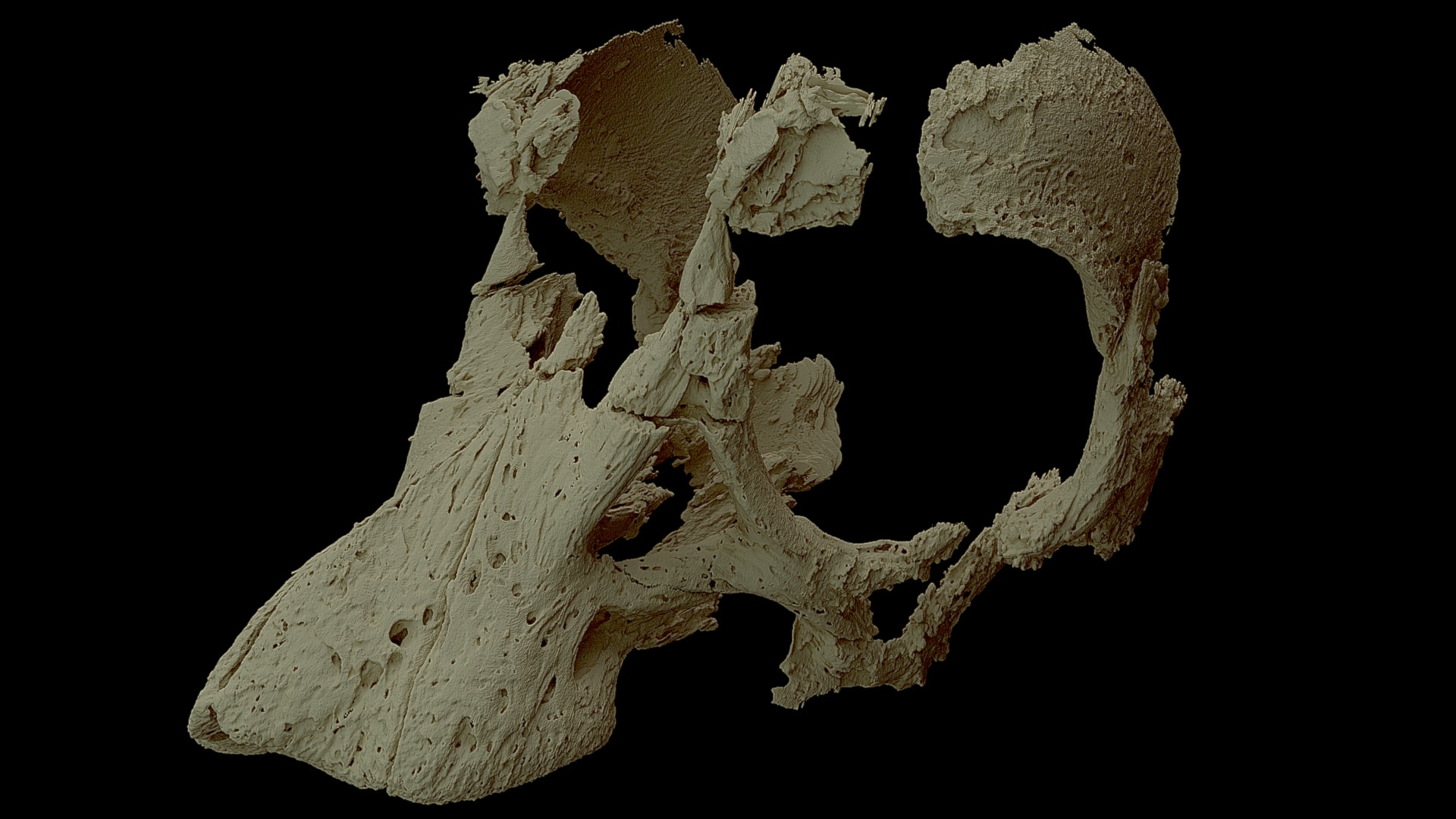Powerful X-ray reveals hidden face of sauropod baby
An international research team, led by Per Ahlberg (SciLifeLab/UU), have successfully revealed the inside of a fossilised, unhatched sauropod egg. Using the Synchotron Radiation Unit, ESRF, in France, they managed to create a high-resolution three-dimensional image of the face of a long-necked baby dinosaur.
Sauropods (large long-necked dinosaurs), such as Brontosaurus and Argentinosaurus, are the largest animals to have ever lived on land, and existed during the Jurassic and Cretaceous periods. They could reach lengths of more than 30 meters and weigh as much as 80 tons, ten times heavier than the largest African elephant.
Unlike today’s megafauna, such as elephants and whales, which are very large already at birth (a newborn blue whale is seven meters long), these giants began their lives the size of a grapefruit despite their astonishing mass as adults.
The sauropod egg was found in Patagonia, Argentina, and was fossilized during the Cretaceous period, some 80 million years ago. While it’s not uncommon for such eggs to be found, it’s very unusual to find anything inside them. And even when bones from embryos have been preserved, they are extremely fragile and almost impossible to study. So fragile in fact, that the bones can never be removed from the stone they are encased in to be reassembled.
The researcher first exposed some of the bones by treating the surface with dilute acetic acid, which has been done with other sauropod embryos before. Then they transported the fossil to the ESRF in France and used an extremely powerful X-ray, produced by a giant accelerator ring, to create a high-resolution and three-dimensional image of the bones and the parts still embedded in stone. The researchers were then able to reconstruct the bones by moving the images around using specialized software, until they had the face of a tiny sauropod.
The huge eyes are directed forward, its nose short, and the upper part of the head appears to be round and arched even though the bones in that region were not fully formed yet. The forward-oriented eyes suggest that the newly hatched baby could focus on objects in front of it with stereo vision.
Another intriguing feature is the forward-pointing bone-spike at the front of the upper jaw. Modern birds and reptiles have a so-called egg tooth made out of horn, not bone, placed in a similar fashion although pointed upwards. The difference is that they shed this horn-structure soon after hatching as it’s only used to get through the shell.
Despite the similarities to other sauropods some mysteries remain. The shape of its skull differs from that of other sauropods which indicates that it belongs to another species, although researchers have yet to link the discovered embryos to any known adult sauropods. Compared to other dinosaurs, the facial bones appear to have developed more rapidly in sauropod embryos, but it is difficult to say why. What is clear, however, is that the researchers, by using synchrotron technology to examine this ancient egg, have found another piece of the sauropod puzzle.
The article that is published in Cell – Current Biology can be found here, and the press release from UU (in Swedish) here.
Photographer/Source: Kundràt et al





